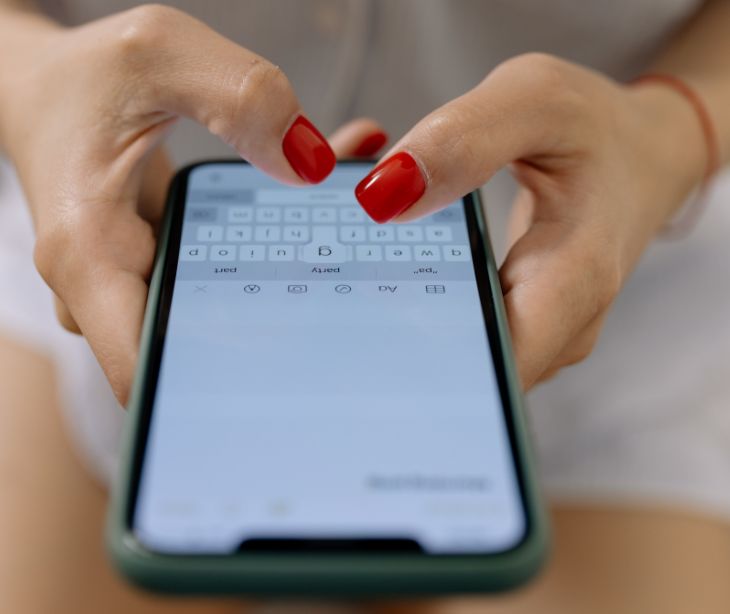3 min read
Using HIPAA compliant texts to enhance patient rehabilitation programs
Caitlin Anthoney April 11, 2024

HIPAA compliant text messaging can extend the reach of rehabilitation services to marginalized people by bridging geographical and financial obstacles through convenient, personalized, and secure communication channels. This leads to better treatment plan adherence and, eventually, better results.
Research on patient involvement with home-based exercise programs states “Adherence to home exercise in rehabilitation is a significant problem, with estimates of nonadherence as high as 50%, potentially having a detrimental effect on clinical outcomes.”
This shows that effective strategies are needed to improve patient adherence to rehabilitation programs. Furthermore, understanding potential barriers can help healthcare providers tailor interventions to increase compliance and ultimately, improve outcomes.
HIPAA compliant text messaging is a secure and convenient solution. When used effectively, it can provide patients with real-time support and personalized guidance.
A recent qualitative study shows that text messages can “support and improve home-based, self-directed plans to continue exercising when community rehabilitation ends, or when community rehabilitation services are unavailable (e.g., in countries or communities where access to basic rehabilitation services may be lacking).”
Providers can use HIPAA compliant texts to bridge geographical and financial barriers. This allows inclusive support to individuals regardless of their location or economic status. Furthermore, it extends the reach of rehabilitation, which could accelerate recovery.
Read also: Addressing social determinants of health with HIPAA compliant texts
Ongoing communication
HIPAA compliant texts facilitate ongoing communication between patients and healthcare providers. Patients can ask questions, seek clarification, or share updates as they arise, without waiting for a designated time.
Additionally, the asynchronous nature of text messaging allows for convenient communication, where individuals can engage at their own pace. Text messaging allows patients to communicate when it is most convenient for them, unlike traditional synchronous methods like phone calls or in-person visits, which may require immediate availability and can be disruptive to daily routines.
Read also: How text messaging can help promote accessibility
Accessibility in underserved areas
Providers can use texts to offer support in regions where traditional rehabilitation services are scarce. For example, if a patient lives in a rural area, lacking specialized rehabilitation facilities, they may struggle to access regular in-person appointments due to long distances or transportation limitations. HIPAA compliant text messaging can help providers stay connected with their patients. In this scenario, patients can receive guidance on exercises, and track their progress from the comfort of their home.
Accommodating communication preferences
Text messaging can cater to different communication preferences and technological literacy levels, promoting inclusivity in patient care. For example, an elderly patient may prefer simple text messages over navigating complex healthcare portals or smartphone apps.
Providers can use a platform like Paubox, which ensures HIPAA compliance without navigating additional portals. This streamlines communication between patients and providers, regardless of their comfort level with technology.
Timely and personalized interactions
Through text messaging, patients receive timely and personalized interactions that are tailored to their individual needs. For instance, a patient recovering from a sports injury may receive exercise reminders and progress updates via text message. These messages could provide encouragement and motivation, helping patients along their journey to recovery.
Another example could be a healthcare provider sending a text message to check in on a patient recovering from knee surgery. The patient responds, mentioning unexpected pain during home exercises. The provider then helps by suggesting modifications to the exercise routine. This immediately addresses the patient's discomfort without having to schedule another appointment.
Enhanced patient privacy
HIPAA compliant texting prioritizes patient privacy and data security by ensuring that sensitive health information remains protected at all times. Providers must use a HIPAA compliant platform, like Paubox, which strictly adheres to HIPAA regulations. This way, protected health information (PHI) is encrypted and safeguarded from unauthorized access or disclosure.
FAQs
What is HIPAA compliant text messaging?
HIPAA compliant text messaging is a secure and convenient communication method that allows healthcare providers to communicate with patients while protecting sensitive health information.
Read also: What is HIPAA compliant texting?
Can HIPAA compliant texts accommodate diverse demographic needs in rehabilitation programs?
Yes, it allows healthcare providers to tailor communication and support to individual patient demographics, including age, language preferences, and technological literacy levels, ensuring inclusivity and effectiveness in rehabilitation programs.
Read also: Personalization in text message-based interventions across different demographics
Can HIPAA compliant text messaging enhance patient engagement?
Yes, HIPAA compliant text messages are an effective way of increasing patient engagement. They encourage more frequent communication, allowing patients to play a more active part in their healthcare journey.
Go deeper: Improve patient engagement with HIPAA compliant text messages
Subscribe to Paubox Weekly
Every Friday we'll bring you the most important news from Paubox. Our aim is to make you smarter, faster.




